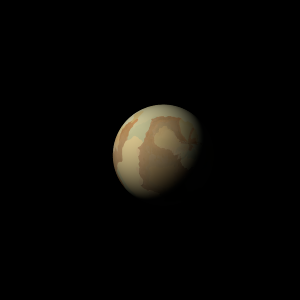|
|
Space Astro
|
Info for exoplanet "Nogahaha"
| Scientific (actual) data |
|---|
| Name | Kepler-1444 b |
| Planet status | Confirmed |
| Radius | 0.194 |
| Orbital period | 33.4203 |
| Discovered | 2016 |
| Updated | 2021-02-05 |
| Tconj | 2454990 |
| Publication | Announced on a website |
| Detection type | Primary Transit |
| Alternate names | 2MASS J19011934+4202255 b, K03237.01, KIC 6587796 b, KOI-3237 b, KOI-3237.01, WISE J190119.35+420225.7 b |
| Star name | Kepler-1444 |
| Right ascension | 285.33° |
| Declination | 42.04° |
| Mag j | 11.195 |
| Mag h | 10.901 |
| Mag k | 10.813 |
| Star distance | 340 |
| Star metallicity | 0.06 |
| Star mass | 1.03 |
| Star radius | 1.05 |
| Star age | 4.79 |
| Star temperature | 5810 |
| Star alternate names | 2MASS J19011934+4202255, KIC 6587796, KOI-3237, WISE J190119.35+420225.7 |
| Wikipedia article | Kepler-1444 b |
Back
| |
| Fictional info (?) |
|---|
| Suggested name | Nogahaha |
| Planet type | Cold planet |
| It was the one of the first exoplanets visited by a spacecraft, and one of the first to be successfully landed on. |
| Atmosphere | 2H2O | 99% |
| Carbon monoxide | 1.0E-6% |
| Atmospheric pressure | 0.02 bar |
 |
| No known satellites |
| Google search for Nogahaha |
|
Website by Joachim Michaelis
|
|
|
|